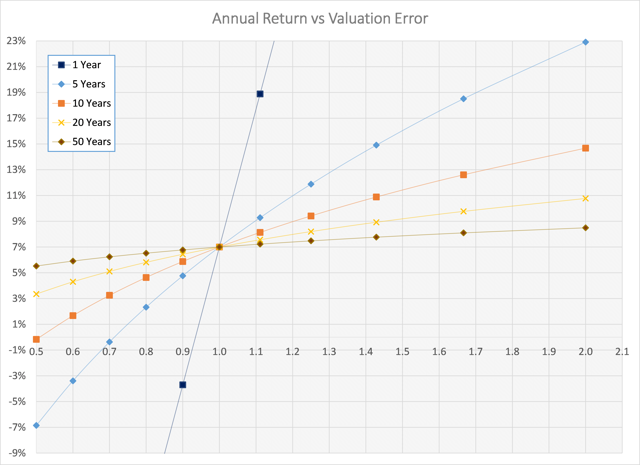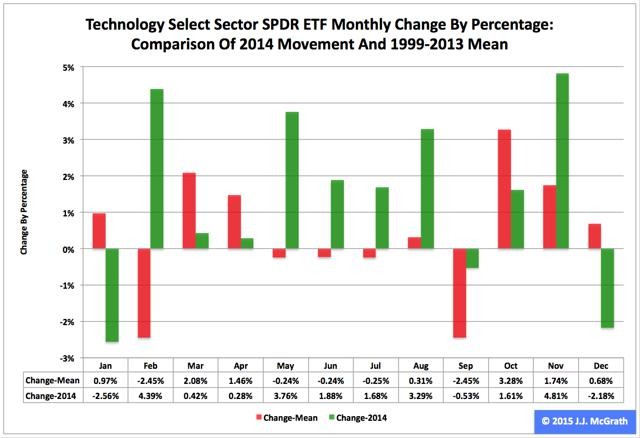A Bear Market Is Unlikely In 2015 SPDR S&P 500 Trust ETF (NYSEARCA SPY)
Post on: 24 Май, 2015 No Comment

Summary
- Bear markets are fairly rare events. However, they can be predicted with a reasonable degree of accuracy.
- This report will briefly review the history of bear markets.
- Typically, bear markets have been associated with business cycle recessions.
I am on the record as stating that there is a substantially higher-than-normal risk of a 10-20% stock market correction in 2015 — particularly between now and July. I will continue to analyze this risk in greater depth in future articles and reports.
In the present article, I will focus on something quite different: Specifically, I will outline why I believe that any stock market correction in 2015 is unlikely to collapse further into a major bear market.
Defining Bear Markets
For the purposes of this article, I define any peak-to-trough decline in the inflation-adjusted total return (including dividends) of the S&P 500 index (NYSEARCA:SPY ) of -20% or more as a bear market. I define a major bear market as a bear market in which the inflation-adjusted total return of the S&P 500 index declined peak-to-trough by at least -30% at some point, and is still below its previous bull market peak by -20% at any time after six months from the point that the index first penetrated the -20% level.
Bear Markets and The Business Cycle
In a report I published last week, I highlighted the importance of the business cycle in analyzing the causes and effects of earnings recessions. Specifically, I showed that in the absence of a business cycle recession, an earnings recession by itself was a poor indicator of stock market declines of 10% or more. The business cycle plays a dominant role in forecasting major stock market declines. In particular, as we shall see below, the evolution of the business cycle is absolutely crucial in forecasting the probability of a bear market.
First, there have been a total of eight business cycle recessions since 1960, and every single one of them has been associated with a bear market as defined above. Second, out of a total of ten bear markets since 1960, eight of them were associated with business cycle recessions.
The only bear markets to not be associated with a recession were that of 1961-1962 and the bear market of 1987. Of these two, only that of 1987 qualifies as a major bear market. Put another way, since 1960, out of ten bear markets, only one of them occurred outside the context of a business cycle recession.
From the above, we can conclude that based on history, in the absence of the onset of a business cycle recession, the probability of a bear market materializing is low, and the probability of a major bear market materializing is even lower.
So what are the probabilities of a business cycle recession materializing in 2015?

The Probabilities of a Recession
Based on my own business cycle forecasting model that takes into account hundreds of variables, the probability of a business cycle recession in the U.S. in the next six months is significantly less than 10%, and the probability of a business cycle recession in the next 12 months is significantly less than 20%. Although my own proprietary business cycle model assigns probabilities of recession within six and twelve months that are higher than well-known models in the public domain, those probabilities are still quite low.
Beyond my own forecasts, it can be readily seen by inspecting the Conference Board’s Index of Leading Economic Indicators, as well as other indicators, such as the Chicago Fed National Activity Index or the Philadelphia Fed’s ADS index, that the U.S. economy has never lapsed into recession with these indicators at current levels while in a multi-month uptrend and within the context of an economy that is still running below potential, according to the estimate of the Congressional Budget Office.
Indeed, outside of the prospect of a major exogenous shock, there is virtually no serious reason to believe that the U.S. economy will enter a recession in 2015. To the contrary, after a first-quarter dip in the rate of GDP growth that has been caused mainly by transitory factors, such as unusually bad weather and the West Coast port strike, I forecast that the U.S. economy will accelerate significantly in the second quarter and even more so in the third and fourth quarters of 2015. In this particular regard, I expect it to follow much the same path as in 2014.
Probability of a Bear Market
Given that the probability of a U.S. economic recession in 2015 is quite low, the probability of a bear market in stocks as represented by indexes such as the S&P 500 and/or The Dow Jones Industrial Average (NYSEARCA:DIA ) is also quite low, both from a logical and statistical point of view.
However, even granting that there will be no business cycle recession in 2015, a bear market could still happen, as occurred in 1961-1962 and 1987. I will analyze these two parallels and several other matters in considerable depth in a report that I will publish later this week through my free newsletter. In that report, I will show, amongst other things, that those two anomalous bear markets — that were not associated with U.S. business cycle recessions — were brought about by rather extraordinary exogenous factors. From this basic observation, we can presently infer that in the absence of extraordinary exogenous factors, a bear market in 2015 is quite unlikely.
Conclusion
Any analysis of the probability of a bear market in a given time frame must contemplate a reasonable margin of error due to the small sample size involved. After all, there have only been 10 bear markets since 1960.
Having said that, every single economic recession in the U.S. since 1960 has had a bear market associated with it. Furthermore, eight out of a total of ten bear markets have been associated with a business cycle recession. The probability that this association is merely random or coincidental is quite low, both from a logical and a statistical point of view.
In this context, it is significant that most indicators of the U.S. business cycle, including the Conference Board’s Index of Leading Economic Indicators, point to a low probability of recession in 2015. Therefore, in the absence of endogenous business cycle risks, one must focus on potential exogenous threats as the primary risk factors for a bear market to materialize in 2015.
Disclosure: The author has no positions in any stocks mentioned, and no plans to initiate any positions within the next 72 hours. (More. ) The author wrote this article themselves, and it expresses their own opinions. The author is not receiving compensation for it (other than from Seeking Alpha). The author has no business relationship with any company whose stock is mentioned in this article.














